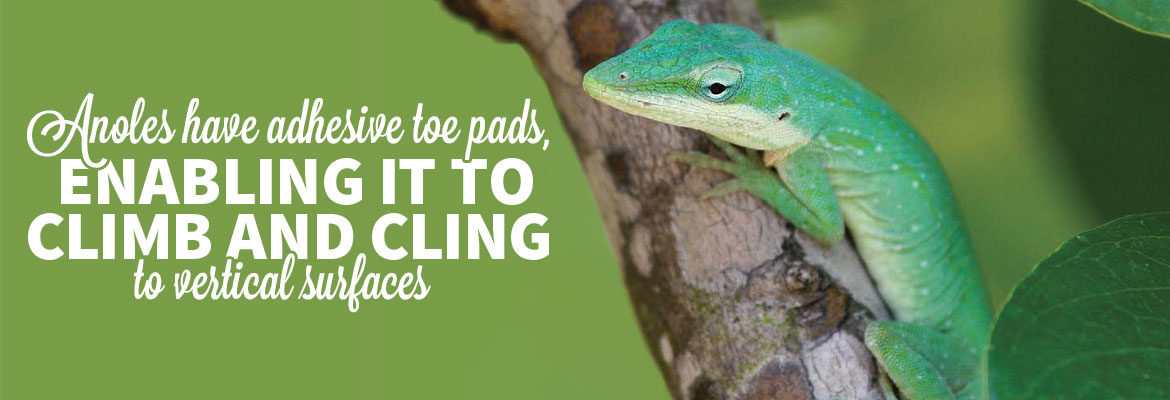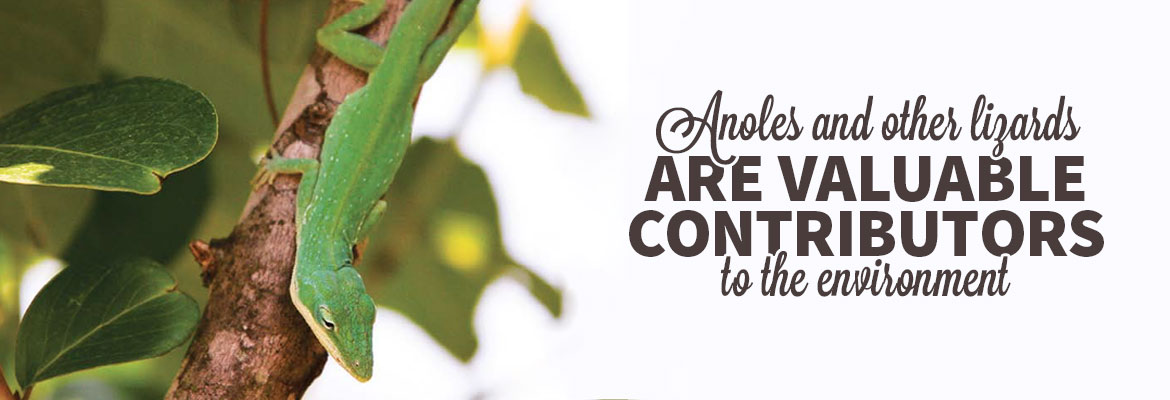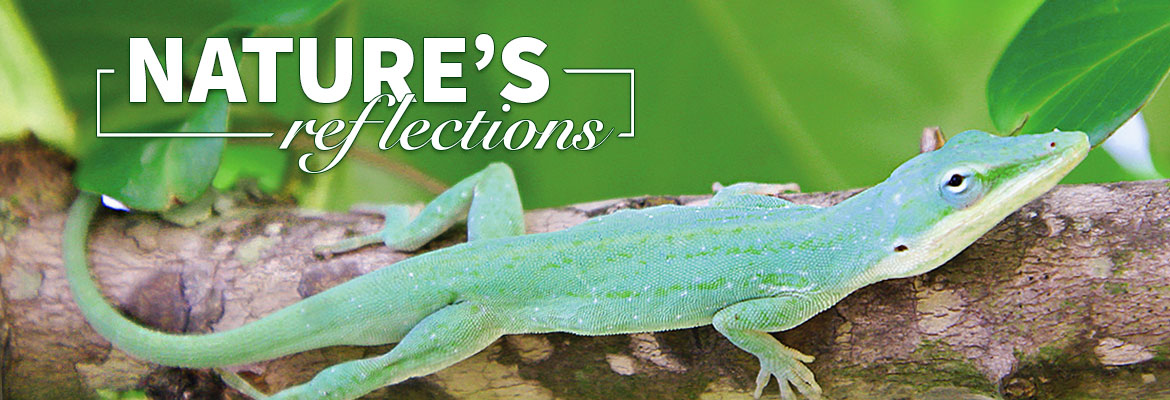Nature’s Reflections – The Green Anole
One of Florida’s best natural pest control experts
This lively little garden critter is the Green Anole (Anolis carolinensis), pronounced uh’no-lee, of the Iguanidae family. It is the only anole native to Florida and not to be confused with the non-native Brown Anole. Its long-pointed snout and smooth skin distinguishes it, as does its ability to change color from green to brown or gray as a camouflage technique and in reaction to temperature. When temps are above 70°F, it tends to be green. In cooler weather it turns brown. Following a territorial dispute, the winner turns bright green while the loser turns brown. Although it is often called a “chameleon,” it is not. Chameleons are natives of Africa and Madagascar, have eyeballs that move independently, and tails that curl into spirals.

Like all lizards, the Green Anole is equipped with moveable eyelids and external ear holes. Adults molt often, casting off skin in pieces. It has adhesive toe pads, enabling it to climb and cling to vertical surfaces. Males grow to eight inches. Females are smaller.
Its long, slender tail makes up half of its length and breaks off at the slightest pressure – allowing for a quick escape. The tail then grows back over several weeks.
Males have a brightly colored patch of skin called a throat fan or dew lap. It appears to inflate, but is actually displayed using a flexible rod of cartilage. The behavior is often accompanied by push-ups and head-bobbing maneuvers when courting a mate or defending territory. Breeding takes place from late March to early October. Females lay single eggs every two weeks in moist soil including the soil in flower pots. The tiny 1/4- to 3/8-inch leathery eggs take five to seven weeks to hatch.

Anoles feed on insects, but only live prey. Anoles have excellent eyesight and are frequently seen quietly stalking prey or basking in the sunlight. It is not unusual to see it gobbling up wood roaches or other bugs. Amazingly, this little lizard can grab and swallow prey almost its size. Anoles and other lizards are valuable contributors to the environment and economically important as natural pest controllers – an essential element in the balance of nature.






